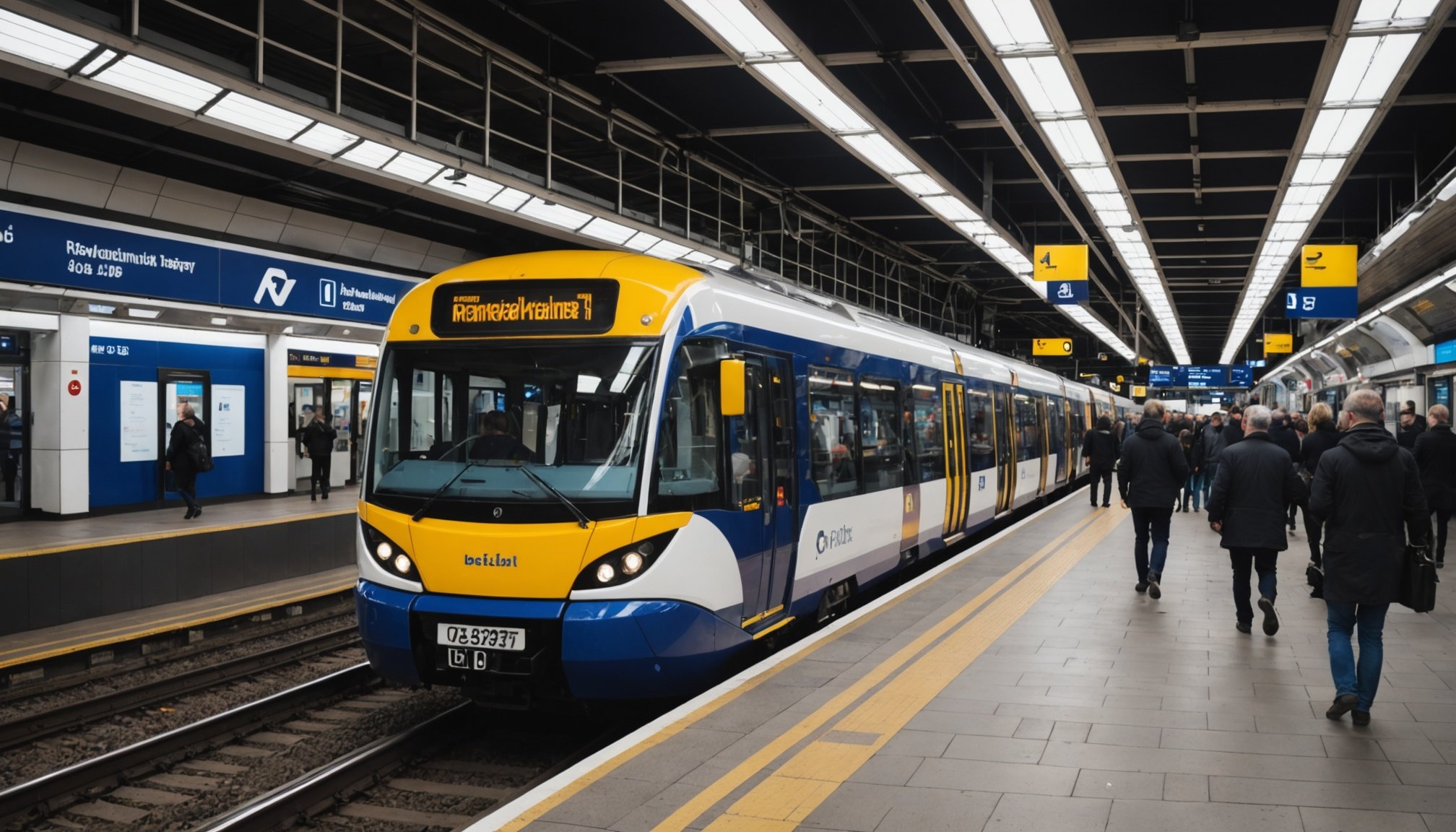Revolutionizing UK Public Transport: How AI Boosts Efficiency and Service Quality
The integration of artificial intelligence (AI) in public transportation is transforming the way cities move people, goods, and services. In the UK, this technological shift is not just about adopting new tools, but about creating a more efficient, reliable, and safe public transport system. Here’s a deep dive into how AI is revolutionizing UK public transport.
The Role of AI in Public Transportation
AI is not a new concept, but its application in public transportation is relatively recent and rapidly evolving. At its core, AI involves the use of machine learning algorithms to analyze vast amounts of data and make informed decisions.
This might interest you : Essential Factors to Weigh for Successful AI Integration in UK”s Healthcare Landscape
Data-Driven Decision Making
One of the key benefits of AI in public transport is its ability to process and analyze large datasets in real time. This data can come from various sources such as traffic sensors, GPS trackers on vehicles, and passenger feedback systems.
- Traffic Sensors: Provide real-time data on traffic conditions.
- GPS Trackers: Monitor the location and movement of vehicles.
- Passenger Feedback: Collect data on service quality and passenger satisfaction.
- Historical Data: Analyze past trends to predict future traffic patterns.
This data-driven approach enables transport authorities to make informed decisions about route optimization, scheduling, and resource allocation, leading to improved operational efficiency.
Additional reading : Understanding the Security Risks Posed by AI-Powered IoT Devices in UK Households
Enhancing Operational Efficiency
Operational efficiency is crucial for any public transport system. AI helps in several ways:
Predictive Maintenance
Predictive maintenance is a game-changer in reducing downtime and operational costs. By analyzing data from sensors installed on vehicles and infrastructure, AI can predict when maintenance is required, preventing unexpected breakdowns.
- Sensor Data: Monitors the condition of vehicles and infrastructure.
- Machine Learning Algorithms: Analyze data to predict maintenance needs.
- Scheduled Maintenance: Reduces unexpected breakdowns and downtime.
For instance, RATP Dev, a global leader in public transportation, uses advanced analytics and AI to optimize maintenance schedules, ensuring that their vehicles are always in top condition[4].
Traffic Management
AI-driven traffic management systems can analyze real-time traffic data to optimize traffic flow. This includes adjusting traffic light timings, managing lane usage, and providing real-time updates to drivers and passengers.
- Real-Time Traffic Data: Analyzes current traffic conditions.
- Dynamic Traffic Light Control: Adjusts timings to optimize traffic flow.
- Lane Management: Optimizes lane usage to reduce congestion.
- Real-Time Updates: Keeps passengers informed about traffic conditions and wait times.
Improving Service Quality
Service quality is a critical aspect of public transportation. AI can enhance the passenger experience in several ways:
Smart Cities and Urban Mobility
Smart cities integrate AI into their urban mobility plans to create more efficient and sustainable transportation systems. For example, AI can be used to optimize public transport routes based on real-time demand, reducing wait times and improving the overall passenger experience.
- Demand-Based Routing: Adjusts routes based on real-time passenger demand.
- Integrated Transport Systems: Combines different modes of transport for seamless travel.
- Smart Traffic Signals: Optimizes traffic light timings to reduce congestion.
Autonomous Vehicles
Autonomous vehicles are the future of public transportation. While still in the experimental phase, these vehicles use AI to navigate through urban environments, potentially reducing accidents and improving safety.
- Sensor Technology: Uses a combination of sensors to navigate.
- Machine Learning: Continuously learns and adapts to new environments.
- Safety Features: Includes multiple redundancies to ensure safe operation.
Ensuring Safety and Security
Safety and security are paramount in public transportation. AI can enhance these aspects in several ways:
Real-Time Monitoring
AI-powered systems can monitor public transport vehicles and infrastructure in real time, detecting any anomalies or potential security threats.
- CCTV Cameras: Provide real-time video feed.
- Sensor Data: Monitors the condition of vehicles and infrastructure.
- Anomaly Detection: Identifies unusual patterns or behaviors.
Predictive Analytics
Predictive analytics can help in anticipating and preventing safety incidents. By analyzing historical data and real-time inputs, AI can predict potential risks and alert authorities accordingly.
- Historical Data Analysis: Identifies patterns and trends.
- Real-Time Data: Provides current status and conditions.
- Risk Assessment: Predicts potential safety risks.
Practical Insights and Actionable Advice
For transport authorities and service providers looking to integrate AI into their systems, here are some practical insights and actionable advice:
Start with Low-Risk Applications
Begin with low-risk applications such as data analytics for traffic management or predictive maintenance. This allows you to test the waters without compromising critical services[3].
Invest in Data Infrastructure
A robust data infrastructure is essential for AI to function effectively. Ensure that your systems can collect, process, and analyze large datasets efficiently.
Collaborate with Experts
Collaborate with AI experts and technology providers to ensure that you are leveraging the latest technologies and best practices. For example, Sopra Steria’s expertise in AI can help organizations develop and deploy AI strategies effectively[1].
Focus on Ethical Use
Ensure that the use of AI is ethical and responsible. Follow guidelines such as the “PRETES” principles outlined by the Canadian government to maintain public trust and ensure compliance with regulations[3].
Real-World Examples
Several real-world examples illustrate the impact of AI in public transportation:
EDF’s IT Support System
EDF, a global leader in low-carbon energy production, implemented an AI-driven system named AMY to enhance its IT support services. This system uses AI to improve service quality and efficiency, a model that can be replicated in public transportation[1].
UK Defence’s AI Integration
The UK Ministry of Defence is planning to double the lethality of its armed forces by 2027, partly through the use of advanced technologies like drones and AI. This strategic use of AI can also be applied to public transportation to enhance efficiency and service quality[2].
The integration of AI in UK public transport is a transformative journey that promises to enhance efficiency, service quality, and safety. By leveraging data analytics, predictive maintenance, smart traffic management, and autonomous vehicles, public transport systems can become more reliable, sustainable, and passenger-friendly.
As Helena Jochberger, Vice-President at CGI, notes, “AI is not just about adopting new technologies; it’s about creating a more efficient and sustainable future for our cities and communities.”[5]
In conclusion, AI is not just a tool but a catalyst for revolutionizing public transportation. As we move forward, it is crucial to embrace this technology responsibly and ethically, ensuring that the benefits are shared by all.
Table: Comparison of Traditional and AI-Driven Public Transport Systems
| Feature | Traditional Systems | AI-Driven Systems |
|---|---|---|
| Data Analysis | Manual data collection and analysis | Real-time data analysis using machine learning |
| Maintenance | Scheduled maintenance based on fixed intervals | Predictive maintenance based on real-time sensor data |
| Traffic Management | Static traffic light timings | Dynamic traffic light control based on real-time traffic data |
| Route Optimization | Fixed routes based on historical data | Dynamic route optimization based on real-time passenger demand |
| Safety | Manual monitoring and response | Real-time monitoring and predictive analytics for safety |
| Passenger Experience | Limited real-time updates | Real-time updates on traffic conditions and wait times |
| Operational Costs | Higher operational costs due to inefficiencies | Lower operational costs through optimized resource allocation and predictive maintenance |
This table highlights the significant improvements AI can bring to public transportation systems, making them more efficient, safe, and passenger-friendly.











